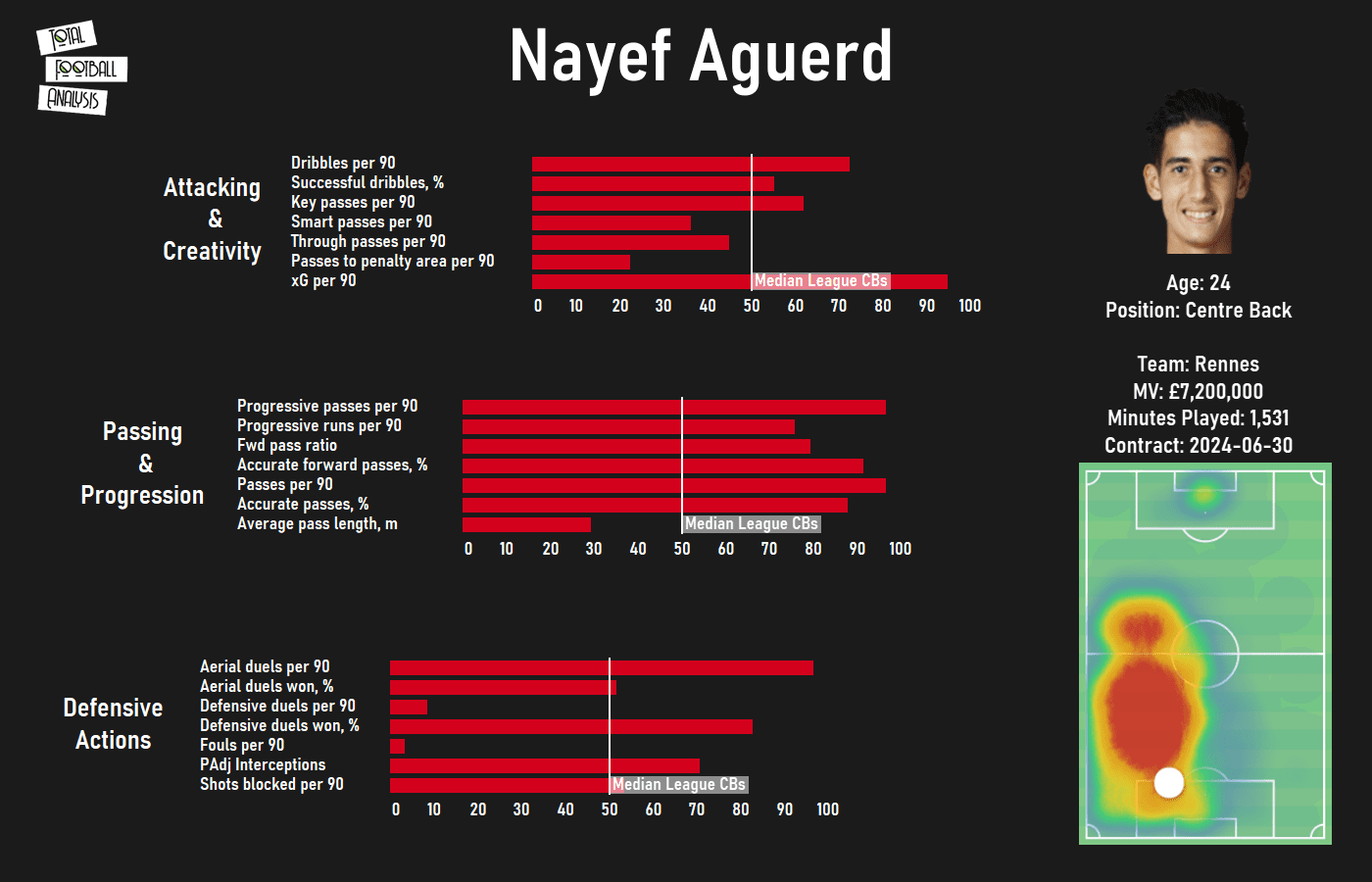
Nayef Aguerd is a 24-year-old Moroccan international central defender who is currently contracted to Rennes in the French top-flight. Aguerd is listed at 188cm | 6’2” and is predominantly left-footed. He initially moved to Europe in 2018 when he left FUS Rabat in Morocco to move to France with Dijon. In the first instance, Aguerd played for the second team at Dijon before establishing himself as a first-team regular for the French side for the 2019/20 season. In August of 2020, he made a move within France to join Rennes for a reported £3.6M. Rennes are, of course, renowned as a side who like to develop young players and allow them to become difference makers in the first-team. They are, however, also strong from a recruitment perspective and this season, prior to their debut in the Champions League, they added the likes of Jeremy Doku, from Anderlecht, Serhou Guirassy, from Amiens and Martin Terrier, from Lyon, alongside Aguerd. Arguably though the Moroccan defender has made the most significant impact at the club so far.
As a left-footed central defender Aguerd is a big part of the build-up phase for Rennes. He is comfortable receiving under pressure or on the half-turn and has the vision and passing range that allows him to access all areas of the field. It is common to see the ball recycled by Rennes back to his slot, typically in the left half-space, before the Moroccan plays diagonally to access space behind the opposition defensive line on the opposite side of the field. What is interesting about Aguerd, however, is that he is equally capable of playing vertical passes that break the lines of the opposition defensive structure or in carrying the ball forward himself in order to provoke the opposition to engage the ball and break from their defensive structure.
In the defensive phase, Aguerd is comfortable when asked to hold a line and defend his penalty area or when pulled out and isolated in wide spaces against quick attacking players. He displays the strength needed to hold up to aggressive attacking players while also having the balance needed to quickly shift position and turn when expected to defend space behind the defensive line as the opposition look to play more direct passes. He opens his hips well and anticipates the movements of the opposition forward.
In this scout report, we will break down the tendencies that make Aguerd such an interesting player both in and out of possession.
Defensive profile
Out of possession Aguerd is a proactive defensive player who likes to defend on the front foot. When we use data to view the player this is shown further as he averages just 4.15 defensive duels per 90 with a success rate of 74.67% but this is coupled with 7.7 possession adjusted interceptions. Aguerd likes to read the attacking intent of the opposition before looking to step out and in front of the ball in order to break up the threat from the attack before it can fully develop. For a player who is so aggressive in terms of his playing style, however, it is notable that Aguerd is conceding just 0.39 fouls per 90.
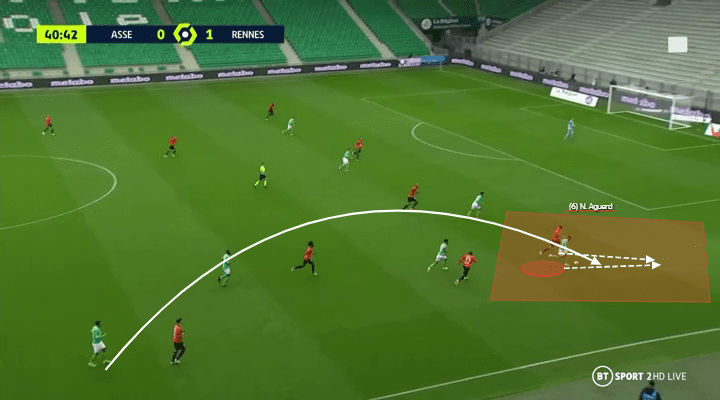
In the modern game it is essential that central defenders are comfortable defending both in central spaces and when pulled out and isolated in wide areas. Fullbacks today tend to be aggressive in their movements in the attacking phase with a clear tendency to move quickly to a higher line in order to support the attack. This, combined with the nature of football to be more transitional than positional these days, means that central defenders have to be mobile in order to compete at the highest levels.
In this example we see the opposition looking to attack quickly down their right-hand side with a pass over the head of the left-back with an attacker moving outside in order to access the space and receive the pass. Aguerd has read the danger and moved out into the wide space in order to cover the threat. As he does so he not only engages the ball carrier but also comes away cleanly with the ball before calmly looking to find a progressive pass in transition.
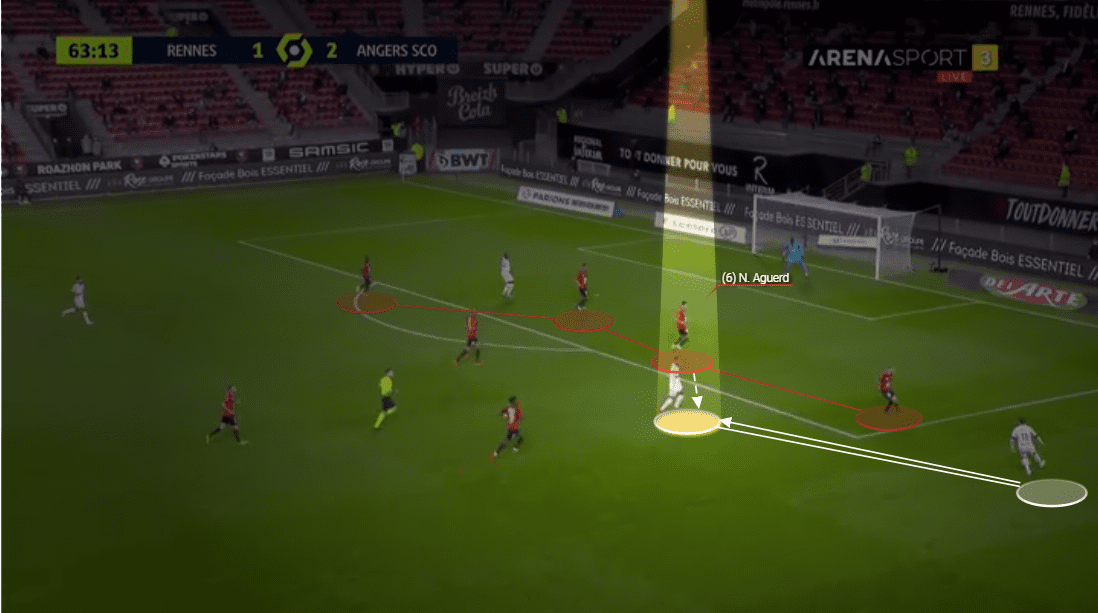
While Aguerd is capable of defending out in wide areas he is also comfortable when acting as part of the defensive line. He understands how to keep balance in the defensive phase and when defending the edge of the penalty area he is perhaps more measured in terms of not moving out quickly to engage the ball as much as he does when defending higher up the field.
In this example we see a situation where the opposition have worked their possession onto a more advanced position. We can see how well structured the back four is and Aguerd is in position maintaining the spacing between the second central defender and the left-back. As the opposition shifts the ball inside to the player at the edge of the penalty area it is Aguerd who reads the danger and moves to challenge and win the ball. If he had been aggressive too early, however, then he would have left space behind that the man originally in possession could have exploited.
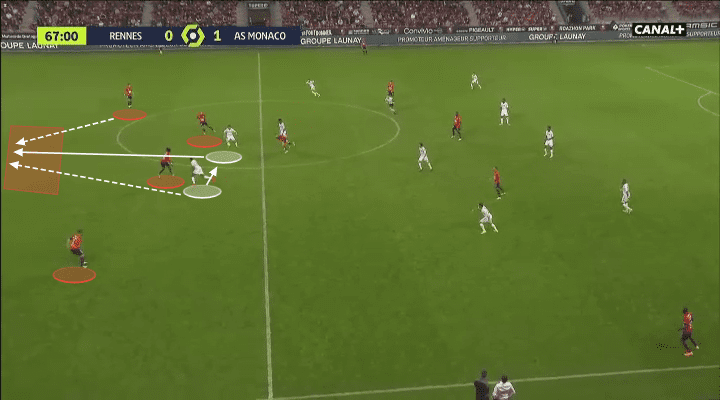
The ability of Aguerd to read the game extends to his capacity to provide cover for his defensive teammates when they are caught out of position. In this example we see a situation where Eduardo Camavinga, the mercurial Rennes midfielder, gives away possession cheaply in the midfield and the defensive unit of Rennes are caught out of position.
A quick give and go from the opposition sees an attacking player released into space with a clear run on goal. That was, however, not accounting for Aguerd, as the Moroccan defender not only read the threat but showed the physical capacity to get back and recover his position to challenge for and win the ball.
Attacking profile
Rennes are a possession orientated side and Aguerd is a key aspect of this. He is averaging 56.46 received passes per 90, further showing that he is a player that the other defenders in the Rennes system rely on and look for. He is averaging 71.9 passes per game and 31.33 per 90 of these are forward passes. This extends to 7.8 passes to the final third per 90 and an impressive 12.62 progressive passes per 90.
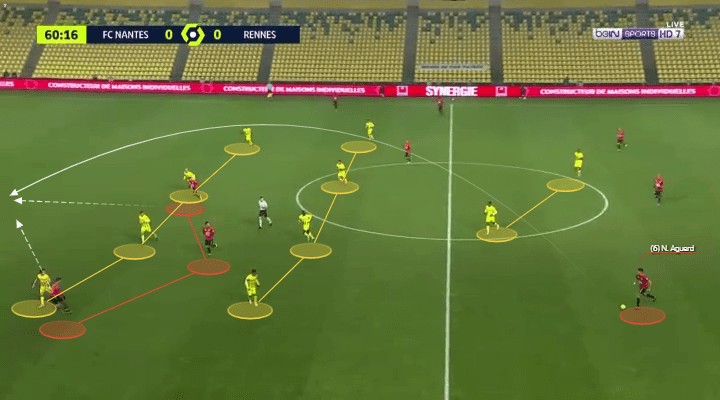
Aguerd is especially effective for Rennes when they are looking to progress the ball through the thirds against a team that plays in a deep and compact defensive block. We see an example of this here as Nantes are defending in a compact 4-4-2 block. As Aguerd receives the ball there is no direct threat in terms of pressure and even the players who are positioned closest to the ball are passive and not looking to move across too quickly.
This allows Aguerd the time and space to read the movement of the attacking players ahead of the ball. As two players look to attack and exploit the space behind the Nantes defensive line we see that Aguerd has the quality on the ball to find the pass that accesses this space and creates an attacking opportunity for his team.
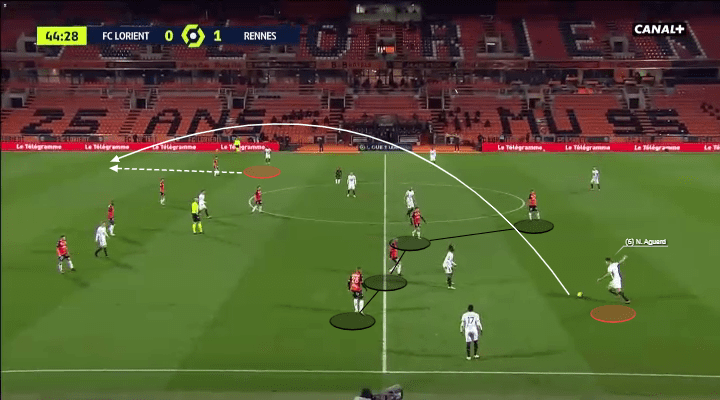
Here we have another example of Aguerd showing his passing range in order to progress the ball for his team. This time the opposition are Lorient and their defensive structure at first glance leaves a lot to be desired.
There are four opposition players relatively close to Aguerd as he receives the ball but none of them make any immediate move to engage the ball and apply significant levels of pressure. This means that, once again, Aguerd is capable of reading the defensive block and identifying the correct passing option.
He, again, has the technique and passing range to access this space via a diagonal pass that releases the far side winger in behind the defensive line.
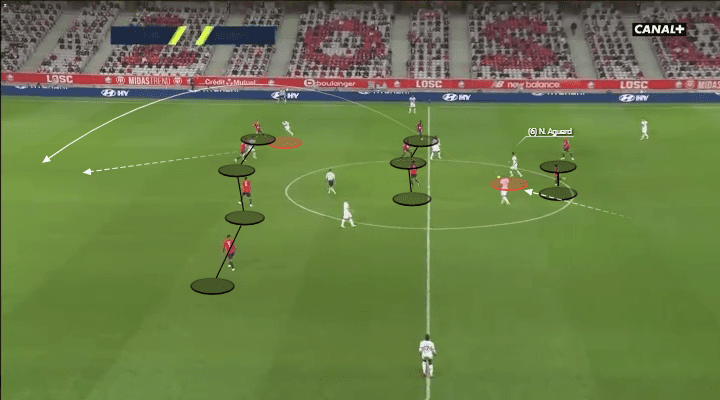
While Aguerd is more than capable of finding these passes when given the time and space to do so he is equally capable of making the correct choice when moving at speed into congested areas of the pitch.
In this example we see Aguerd moving initially past the first opposition defender towards the half-way line. As he does so the midfield block will look to engage and prevent him from continuing with this attacking momentum. While still moving at speed into this area Aguerd is able to identify the run from the far side winger, who is making a forward movement from a deep position, and Aguerd finds the pass to release the run.
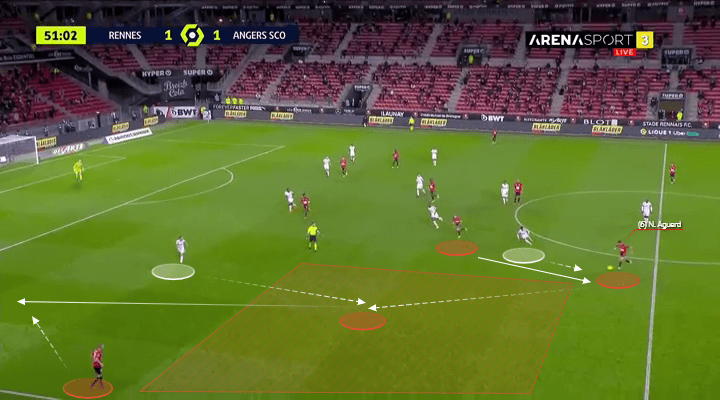
As well as being able to pass intelligently we see Aguerd carrying the ball towards the opposition half when the opportunity presents itself. This forces the opposition, when they are defending deep, to break players from their defensive structure to stop the forward run from the central defender.
In this example we see Aguerd having received the ball just inside his own half. As he does so he recognises the press from the first opposition player and chooses to move quickly away from this pressure to access the space in the shaded area.
This movement from the central defender forces the Angers right-back to move out to engage the ball and Aguerd is able to play the through pass that releases his winger into space on that side of the pitch.
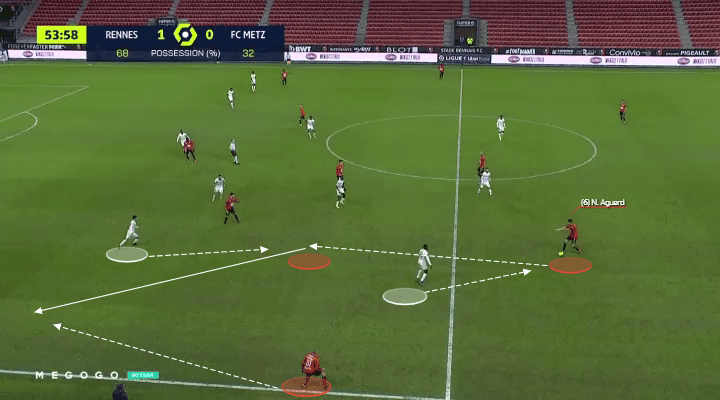
Finally, we again see Aguerd carrying the ball forward, this time from the match between Rennes and Metz. As the central defender receives the ball he is put under immediate pressure but the man applying the pressure is too aggressive and Aguerd is able to comfortably outplay him as he carries the ball into the opposition half.
Once again we see that this movement affects the opposition right-back, who has to advance and engage the ball. Once again we see that Aguerd has the quality to release the ball at the right time to find the left-back who is moving high in space.
Conclusion
There is no doubt that Rennes have unearthed a potential star in Nayed Aguerd. He has not looked out of place when playing in the Champions League and his profile is that of the perfect modern centre-back. Perhaps the main knock on him is that he is short of top-level pace. This is mitigated somewhat, however, by his positional sense and ability to read the game.
Aguerd is a player to watch closely over the next 18 months.

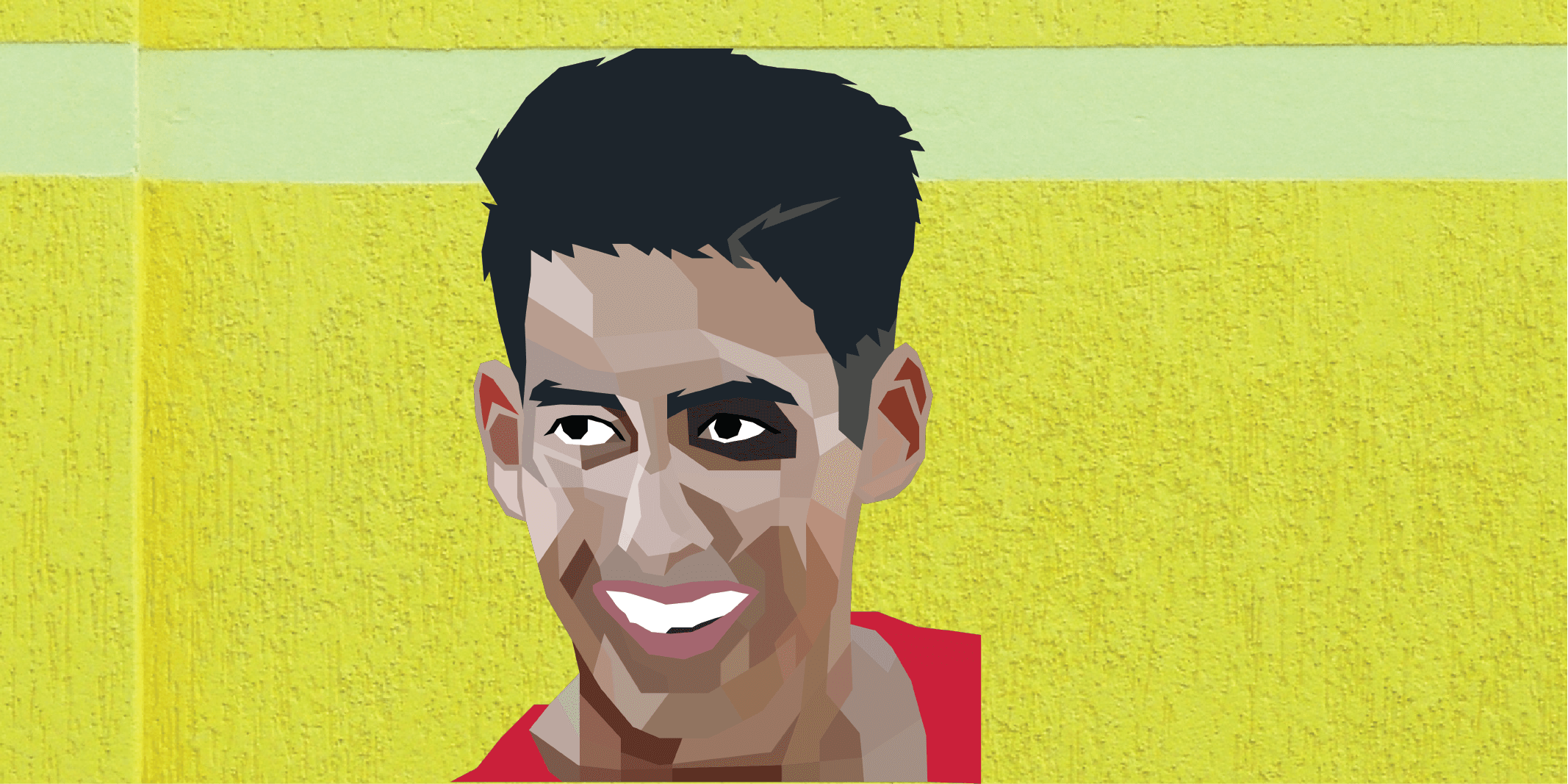




Comments